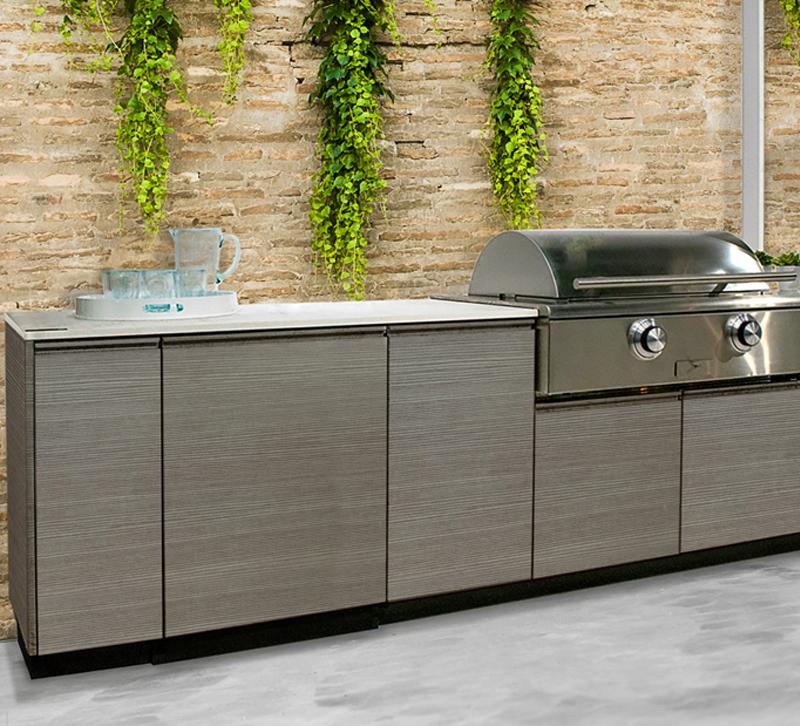Brown Jordan released its 2019 Outdoor Living Report today, and there's plenty to unpack. Written in partnership with companion company Danvers Stainless Steel Kitchens, this report details the latest in the fast-evolving outdoor living space as an extension of the home.
You can check out the full report here, but to save you some time, we delved in to find what consumers want in their outdoor spaces. Here's what we found to be most interesting.
Consumer preferences by region
Just as no two areas of the United States are exactly alike, neither are the tastes and preferences of those consumers. In its report, Brown Jordan asked its network of dealers across the country for their insights on what styles and finishes consumers want.
Here's what they found by region:
- New England: Expect gray to do well in this market. Consumers in this region have smaller outdoor spaces, but they're looking for upgrades that make a statement within that space.
- The Mid-Atlantic: Sleek and contemporary looks are gaining traction among these consumers. They're also more likely to coordinate the look of their indoor and outdoor kitchens.
- The East and South Central: For these consumers, outdoor cooking is part of the southern lifestyle, so outdoor kitchens are often bigger and have additional appliances, such as smokers and pizza ovens.
- The Midwest: Larger kitchen designs are starting to become more popular in this region as consumers embrace new outdoor kitchen appliances such as wine coolers and pellet grills. Cabinet finishes such as black, gold and Champagne are doing well.
- The Southwest: To reflect that desert look, consumers prefer masonry and materials that fit the part. Warmer hues in cabinet finishes are also growing in popularity, likely to match the surrounding environment.
- West Coast: Consumers here want sculptural spaces that have an artistic design. Minimal, conceptual furniture, planting walls and green enclosures add both function and style. Two products doing well here? Patterned flooring and encaustic tiles.
Are you seeing similar trends in your area? Check your outdoor furniture sales and see if they match what these Brown Jordan retailers say.
Colors, materials and textile connect
Today's consumers want the colors, materials and textiles of their outdoor living spaces to connect to each other. As Laurie March, industry influencer and remodeling professional, told Brown Jordan, consumers are open to using more color in their outdoor spaces. "Blue is beloved, and green exudes wellness," she said. "When colors complement the surrounding landscape — be it a wood grain or particular hue, it deepens the connection to the outdoors."
Black is becoming a neutral in outdoor spaces when used for appliances, cabinets, countertops or accents. Among the top powder coat finishes nationwide, Teak topped the wood grains. Boysenberry was the top moody hue and neutral, and Metalic Bronze Matte was top in the metallic pop category. In 2019, Brown Jordan predicts these deeply saturated hues — think Boysenberry, Olive Green and Dark Blue — will do well.
To create the connection between colors, materials and textiles, interior designers can pull from the inside out. More consumers see their outdoor spaces as extensions of their indoor ones, so when deciding on a color palette, consider what's used indoors and how those colors and materials can be reimagined for outdoor spaces. You can also pull elements from indoor lighting fixtures to the outdoors.
Classic over trendy
Though styles may vary by region, a simple, classic style is the preferred baseline for consumers, according to the report. Because consumers don't want to change the bones of their outdoor spaces too much from year to year, they're opting for classic styles and then using throw pillows, rugs and accents to change up their looks.
"Today’s consumer is beginning to realize that they only have to buy it once if they buy it right," March told Brown Jordan. "It’s an evolution in both product and behavior."
What may be interesting to watch is how long this classic-over-trendy trend lasts. More consumers, especially younger generations, are becoming comfortable changing out furniture every few years. Outdoor spaces, of course, require more durable materials, but consumers may opt for buying furniture and other products of lower quality with the expectation of replacing them every few years.
For younger consumers, that may be more out of necessity than taste. As Millennials and Generation Zers face student debt and other financial burdens, it may take longer for them to be able to afford outdoor furniture of higher quality, so cheaper options that need to be replaced may be the only way to go.
Retailers and designers, tell us: What do you find most interesting about the Outdoor Living Report? Share with us in the comments!







